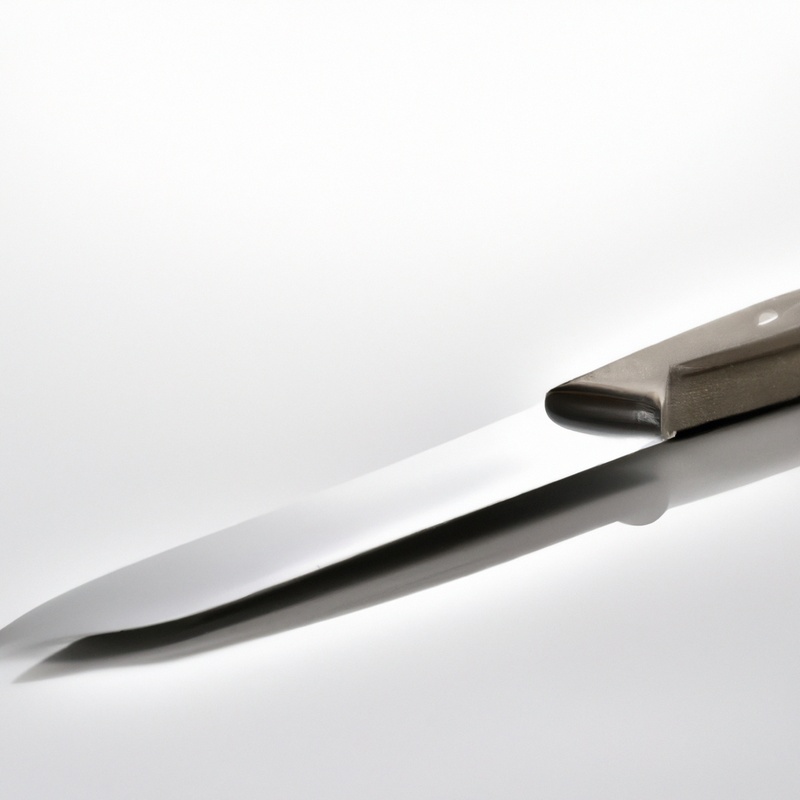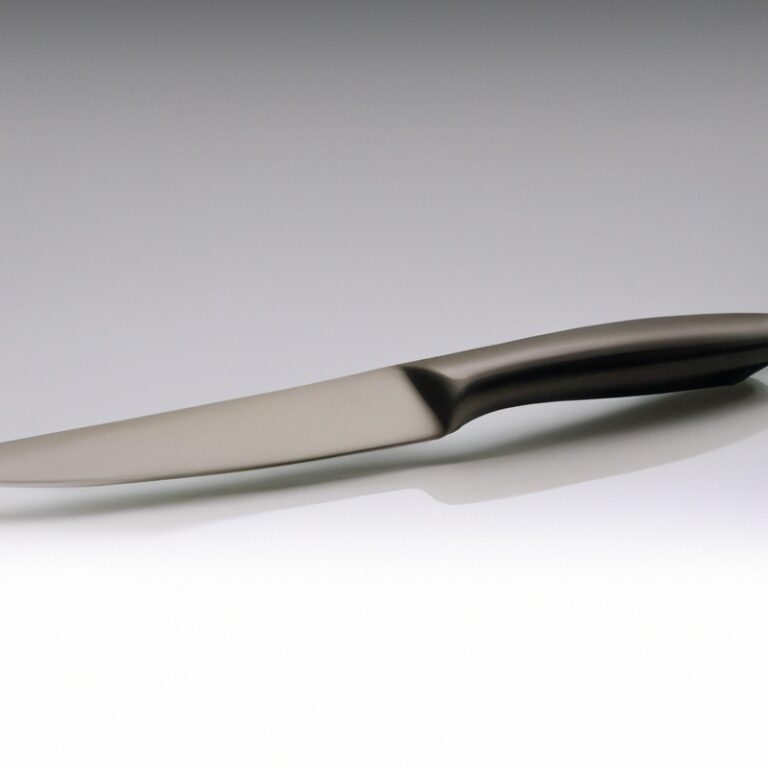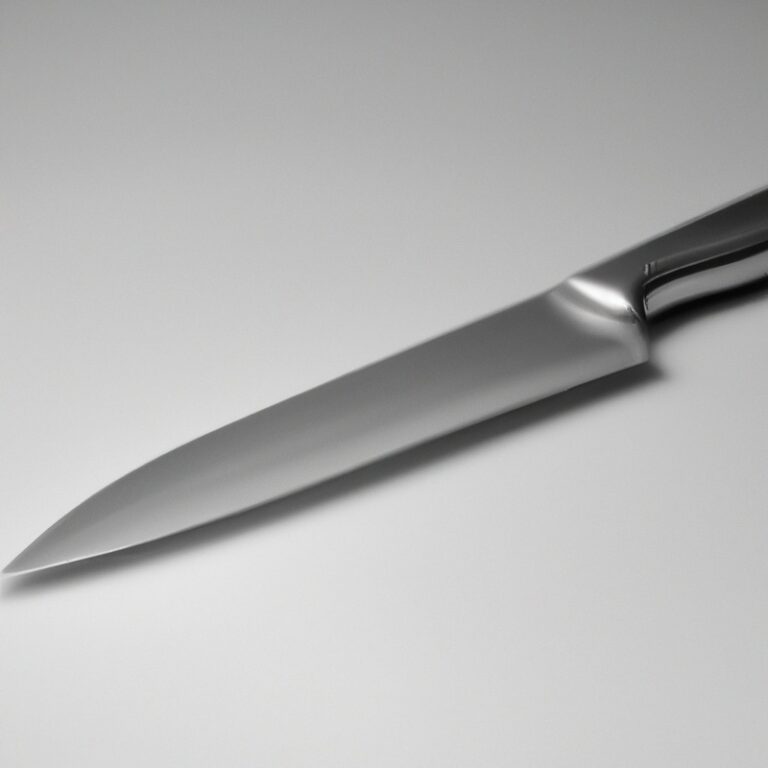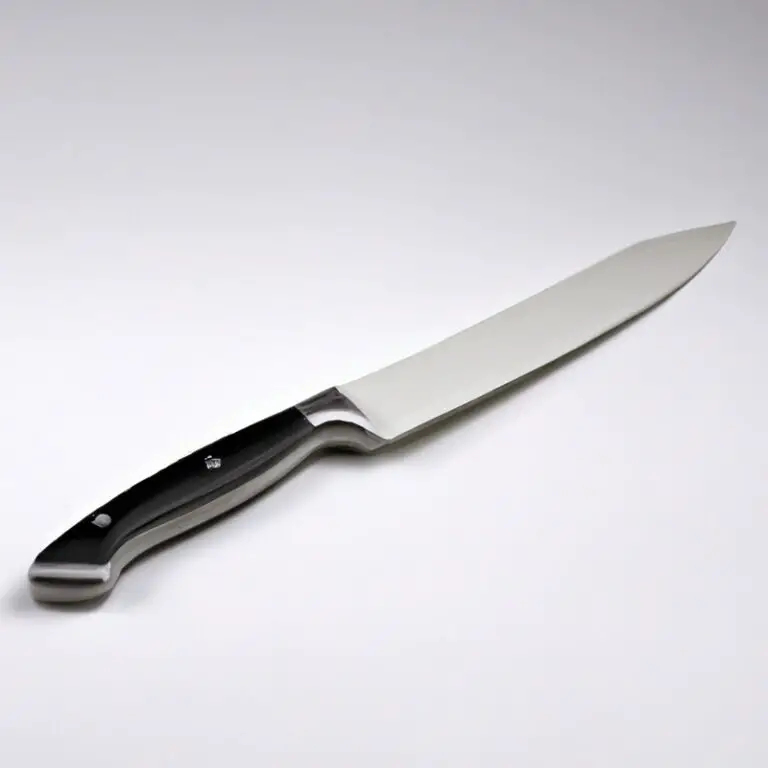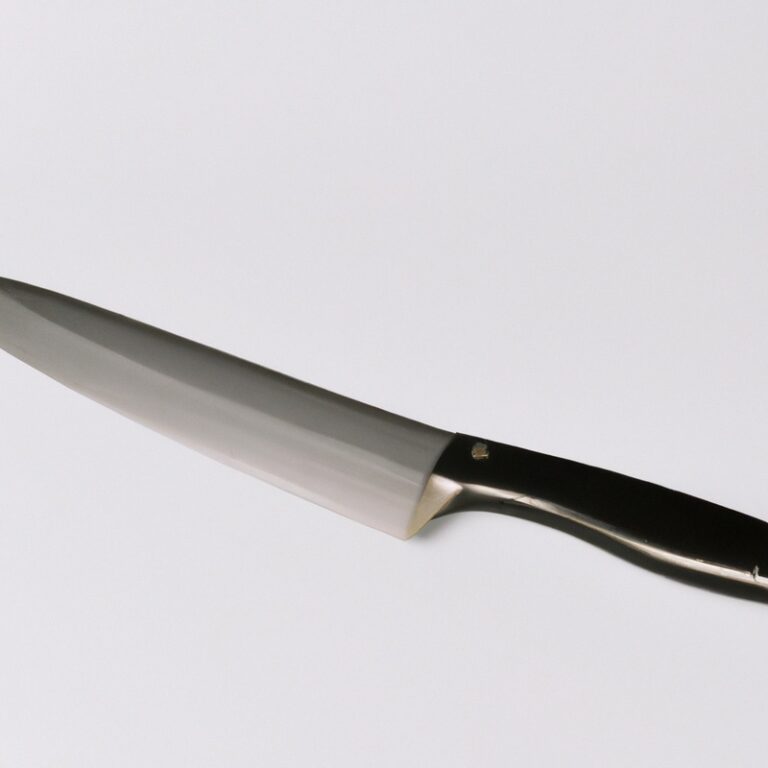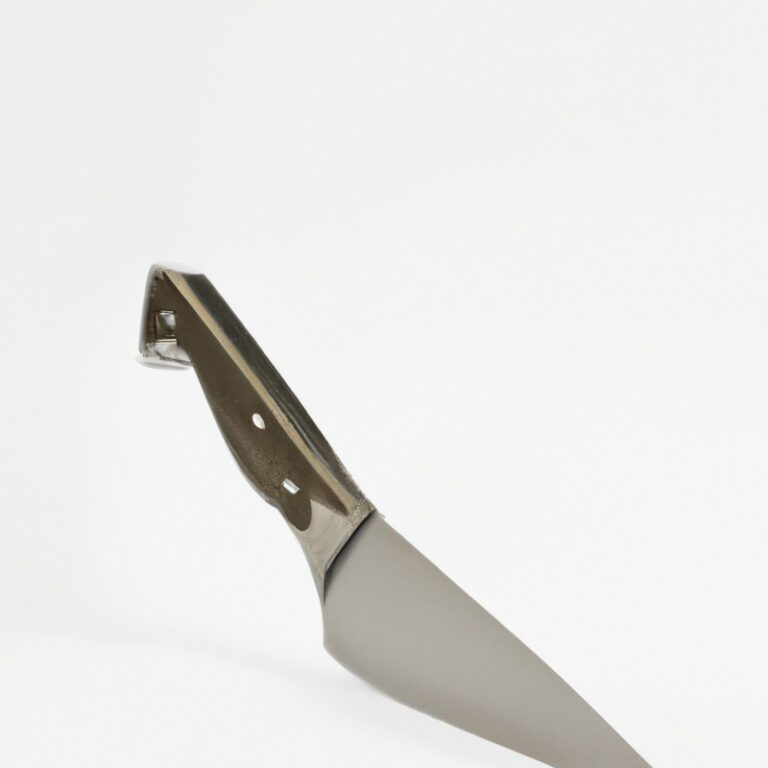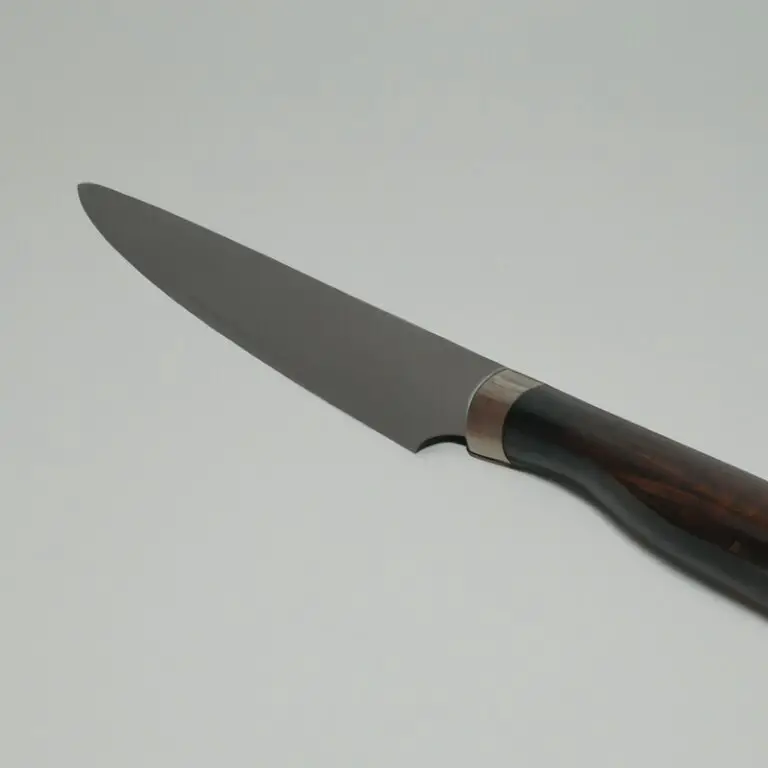Which Knife Steel Is Best For Filleting Fish?
Key Takeaways:
- High carbon stainless steel is the best knife steel for filleting fish due to its durability and corrosion resistance.
- The flexibility of the blade is important when choosing a knife steel for filleting fish to ensure precise cuts.
- Knife steels with a sharp edge retention are essential for filleting fish to minimize tearing and maximize the clean cuts.
- The choice of knife steel for fish filleting ultimately depends on personal preference and the specific requirements of the task at hand.
Imagine this: you’re standing on the edge of a rushing river, holding a fresh catch in your hands.
The excitement builds as you prepare to fillet the fish and savor its delicious flavors.
But before you dive in, there’s one important decision to make – which knife steel is best for the job?
As a seasoned fisherman and knife enthusiast, I’ve spent countless hours testing different steels for filleting fish.
In this article, I’ll guide you through the world of knife steel, exploring the factors to consider and revealing the top choices for filleting fish.
Get ready to sharpen your skills and elevate your fish filleting game to new heights!
| Knife Steel | Pros | Cons |
| Stainless Steel | – Resistant to corrosion – Easy to clean – Low maintenance | – Less edge retention – More difficult to sharpen |
| High Carbon Steel | – Excellent edge retention – Easy to sharpen – Holds a sharp edge for longer | – Prone to rust and corrosion – Requires regular maintenance |
| VG-10 Steel | – High strength and durability – Excellent edge retention – Resistant to rust and corrosion – Easy to sharpen | – Relatively expensive |
Understanding knife steel
Different types of knife steel used for filleting fish
When it comes to filleting fish, there are several types of knife steel that are commonly used.
These include:
- Stainless steel: Stainless steel blades are popular due to their corrosion resistance and ease of maintenance. Some popular stainless steel options for filleting fish include X50CrMoV15, VG-10, and S30V.
- Carbon steel: Carbon steel blades are known for their ability to hold a sharp edge and are often preferred by professional chefs. Popular carbon steel options for filleting fish include 1095, AUS-8, and Blue Steel #1.
- Ceramic blades: Ceramic blades are extremely sharp and have excellent edge retention. They are also resistant to staining and do not require frequent sharpening. Common ceramic options for filleting fish include zirconia-based ceramics and silicon carbide ceramics.
Each type of knife steel has its own advantages and considerations, so it’s important to choose one that suits your specific needs and preferences.
Factors to consider when choosing knife steel for filleting fish
Flexibility and blade thickness
When choosing knife steel for filleting fish, two important factors to consider are flexibility and blade thickness.
Flexibility is crucial because it allows the blade to bend and follow the contours of the fish while filleting.
A flexible blade prevents the knife from getting stuck in bones or tough parts of the fish, making the process smoother and more efficient.
Blade thickness also plays a role in filleting.
A thin and narrow blade allows for precise cuts and easier maneuverability around bones and joints.
Thicker blades may lack the necessary finesse for clean filleting.
By finding a balance between flexibility and blade thickness, you can ensure that your filleting knife is well-suited for the task at hand.
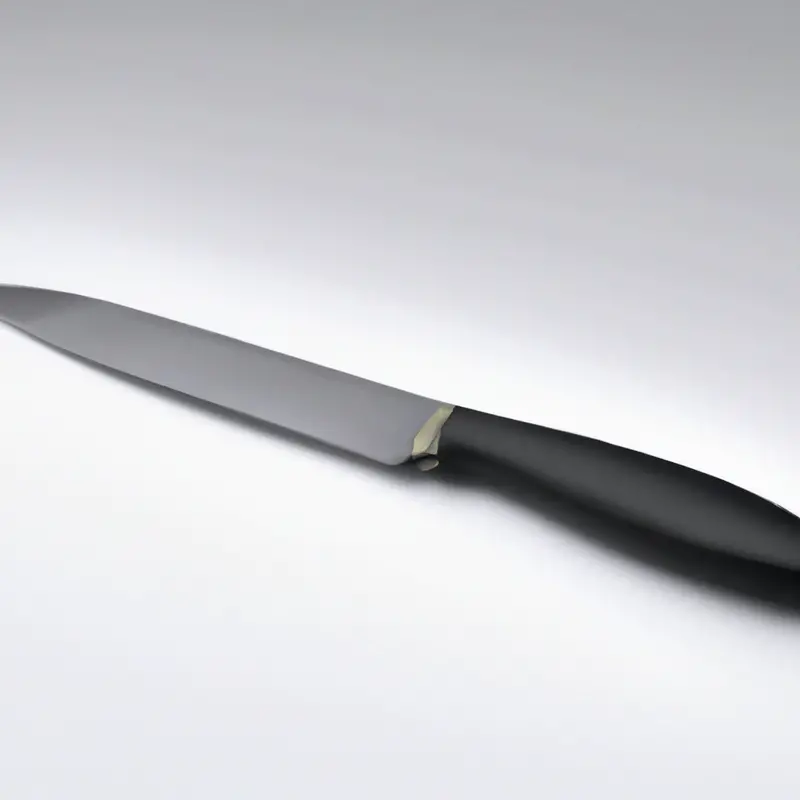
Corrosion resistance
Corrosion resistance is a key factor to consider when choosing knife steel for filleting fish.
It refers to the ability of the steel to resist rust and corrosion caused by exposure to moisture and acidic elements present in fish.
On top of ensuring longevity and durability of the knife, corrosion resistance also helps maintain food safety by preventing contamination.
Stainless steel options like X50CrMoV15, VG-10, and S30V are known for their excellent corrosion resistance.
Ceramic blade options, such as zirconia-based ceramics and silicon carbide ceramics, are also highly resistant to corrosion.
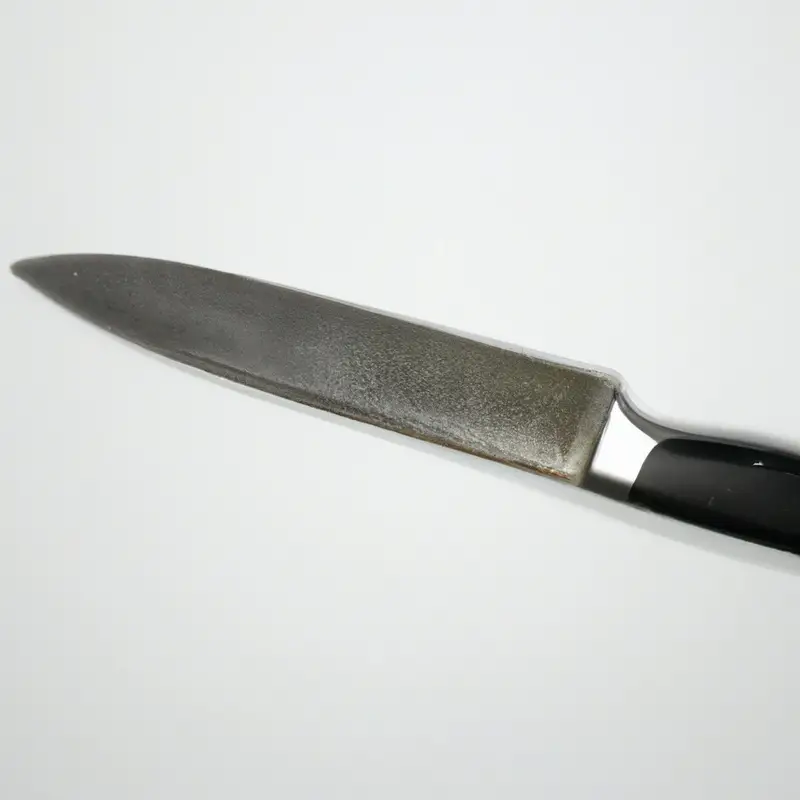
Edge retention and sharpness
When choosing knife steel for filleting fish, edge retention and sharpness are key factors to consider.
You want a steel that can hold a sharp edge for a long time, allowing you to make precise cuts without frequent sharpening.
Look for steels known for their excellent edge retention, such as high-carbon stainless steels like 1095 or AUS-8, as well as premium stainless steels like X50CrMoV15 or VG-10.
These steels will ensure that your knife stays sharp and ready to tackle any fish filleting task.
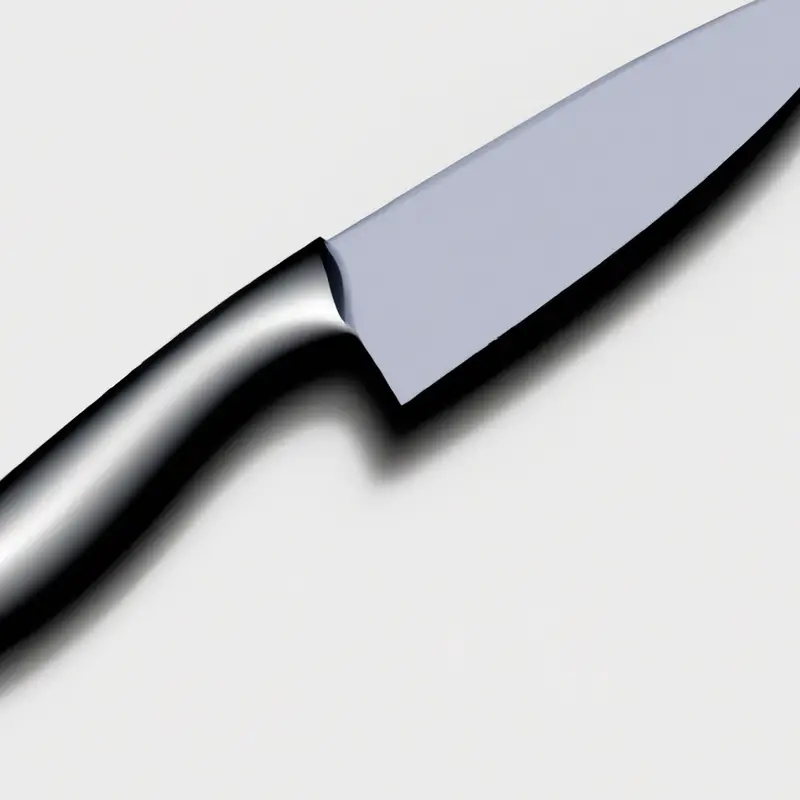
Ease of sharpening
When it comes to sharpening your fillet knife, ease of sharpening is an important factor to consider.
You want a knife steel that can be easily sharpened, so you can maintain a razor-sharp edge for precise filleting.
Some knife steels require specialized tools or skills for sharpening, while others can be easily sharpened with basic tools like sharpening stones or honing rods.
Look for knife steels that are known for their ease of sharpening, as this will save you time and effort in maintaining your fillet knife’s performance.
Best knife steels for filleting fish
Stainless steel options
Stainless steel is a popular choice for filleting fish knives due to its excellent resistance to corrosion.
Here are three stainless steel options that are commonly used:
- X50CrMoV15: This steel is known for its high corrosion resistance and good edge retention. It is easy to sharpen and maintains its sharpness well.
- VG-10: VG-10 steel offers excellent corrosion resistance and is known for its exceptional hardness. It also holds its edge well and is relatively easy to sharpen.
- S30V: S30V steel is highly corrosion resistant and has excellent edge retention. It is a premium steel that offers exceptional performance in filleting fish.
These options provide a good balance of corrosion resistance, edge retention, and ease of sharpening, making them ideal for filleting fish.
X50CrMoV15
X50CrMoV15 is a popular knife steel for filleting fish.
It is a stainless steel that offers a good balance of hardness, corrosion resistance, and ease of sharpening.
The high chromium content provides excellent resistance to rust and staining, while the molybdenum and vanadium enhance the steel’s strength and edge retention.
It is also known for its ability to maintain a sharp edge for extended periods of time.
Overall, X50CrMoV15 is a reliable choice for filleting fish due to its durability and performance.
VG-10
VG-10 is a popular knife steel choice for filleting fish. It is known for its exceptional sharpness, edge retention, and corrosion resistance.
The high carbon content in VG-10 allows for a razor-sharp edge that can easily glide through fish flesh.
It also contains vanadium and cobalt, which contribute to its strength and toughness. Additionally, VG-10 is stainless steel, making it resistant to rust and staining.
Overall, VG-10 is a reliable and high-performing option for filleting fish.
S30V
S30V is a high-quality stainless steel often used for filleting fish.
It is known for its excellent edge retention, meaning it will stay sharp for longer periods of time.
This steel is also highly resistant to corrosion, so you won’t have to worry about your knife rusting when exposed to water and moisture.
S30V can be a bit more difficult to sharpen compared to other steels, but with some practice, you can maintain a razor-sharp edge.
Overall, S30V is a great choice if you want a durable and long-lasting knife for filleting fish.
Carbon steel options
Carbon steel is a popular choice for filleting fish knives due to its excellent edge retention and sharpness.
Three carbon steel options to consider are:
- : This high-carbon steel is known for its exceptional hardness, making it ideal for precise cuts. However, it is prone to rust and requires regular maintenance to prevent corrosion.
- AUS-8: AUS-8 is a stainless carbon steel that offers a good balance between performance and corrosion resistance. It holds an edge well and is relatively easy to sharpen.
- Blue Steel #1: Blue Steel #1, also known as Aogami #1, is a high-quality carbon steel used in traditional Japanese knives. It has excellent edge retention and is favored by professional fisherman. However, it requires careful maintenance to avoid rusting.
Each of these carbon steel options has its own advantages and considerations, so choose the one that aligns with your preferences and maintenance routine.
1095
1095 is a high carbon steel that is commonly used for filleting fish. It is known for its excellent edge retention, making it ideal for tasks that require precision and sharpness. This steel is also easy to sharpen, ensuring that your knife stays in top condition. However, 1095 is prone to corrosion, so it is important to clean and dry your knife after use to prevent rust. Proper maintenance and regular sharpening will help maximize the performance and longevity of your 1095 filleting knife.
AUS-8
AUS-8 is a popular knife steel option for filleting fish.
It is known for its excellent balance of affordability and performance.
AUS-8 offers good edge retention and corrosion resistance, making it a reliable choice for working with fish.
It is also relatively easy to sharpen and maintain.
While it may not have the same level of performance as some higher-end steels, AUS-8 is a solid option for those looking for a cost-effective filleting knife.
Blue Steel #1
Blue Steel #1 is a popular choice for filleting fish. It is a high-carbon steel known for its excellent edge retention and sharpness.
The steel is made from a combination of iron and carbon, which gives it its strength and durability.
Blue Steel #1 is also known for its ease of sharpening, making it a practical option for those who prefer maintaining their knives themselves. However, it is important to note that Blue Steel #1 can be prone to rust and requires proper care and maintenance to prevent corrosion.
Ceramic blade options
Ceramic blades are a great option for filleting fish due to their excellent sharpness and durability. They are made from materials like zirconia-based ceramics and silicon carbide ceramics.
These blades are incredibly hard, which ensures a razor-sharp edge and allows for precise cuts.
Ceramic blades also have exceptional corrosion resistance, meaning they won’t rust when exposed to fish or other acidic substances. While they are more brittle than steel blades, proper handling and care can help prevent damage.
Remember to avoid using excessive force and always store ceramic blades safely.
Zirconia-based ceramics
Zirconia-based ceramics is a popular choice for filleting fish knives. These blades are known for their exceptional hardness, which allows for precise and clean cuts.
The ceramic material also offers excellent corrosion resistance, keeping the blade in top condition even when exposed to water and fish acids.
Another advantage is their lightweight nature, reducing fatigue during long filleting sessions. However, it’s essential to note that ceramic blades are more brittle and require special care to prevent chipping or breaking.
Regular sharpening is also necessary to maintain their sharpness.
Silicon carbide ceramics
Silicon carbide ceramics are a great option for filleting fish knives.
They have exceptional hardness and wear resistance, ensuring long-lasting performance.
The ceramic blade stays sharp for extended periods, reducing the need for frequent sharpening.
Additionally, silicon carbide ceramics offer excellent corrosion resistance, making them ideal for use in wet environments.
Their lightweight nature also makes them comfortable to handle.
Just be cautious with their brittleness, as they can chip or break if mishandled.
All in all, silicon carbide ceramics are a reliable choice for filleting fish.
Maintenance and care tips for filleting fish knives
Cleaning and drying after use
After using your filleting fish knife, it’s important to clean and dry it properly to maintain its performance and prolong its lifespan. First, rinse the knife with warm water to remove any fish residue.
Use a mild dish soap and a soft sponge to gently scrub the blade, being careful not to apply too much pressure.
Rinse thoroughly to remove any soap residue. Next, dry the knife completely with a clean towel to prevent any moisture from causing rust or corrosion.
It’s also a good idea to store your knife in a dry place to further protect it.
Proper storage to prevent damage
Proper storage is essential to prevent damage to your filleting fish knives. Here are a few tips to keep in mind:
- Store knives in a knife block or sheath: This will protect the blades from getting chipped or damaged while keeping them easily accessible.
- Avoid storing knives in a jumbled drawer: Knives can rub against each other and dull the edges or even cause accidents. Use blade guards or a knife roll if you prefer to store them in a drawer.
- Keep knives away from moisture: Moisture can lead to rust and corrosion, so make sure your knives are completely dry before storing them. Consider using a moisture-absorbing packet in your storage area.
- Store knives in a cool, dry place: Extreme temperatures and humidity can affect the performance and lifespan of your knives. Find a storage spot that is away from direct sunlight and moisture.
- Use a knife magnet strip: If you prefer to have your knives displayed on the wall, a magnetic strip can be a great option. Just make sure the magnets are strong enough to securely hold the knives in place.
Remember, proper storage not only helps protect the longevity and performance of your filleting fish knives, but it also ensures your safety when handling them.
Regular sharpening to maintain performance
Regular sharpening is essential for maintaining the performance of your filleting fish knife. Keeping the blade sharp ensures clean and precise cuts, making your filleting tasks easier and more efficient.
By sharpening your knife regularly, you prevent the blade from becoming dull, which can result in jagged cuts and increased effort.
A sharp knife also reduces the risk of accidents caused by slipping or applying excessive force. Make sure to use the appropriate sharpening method for your knife’s steel type, following the manufacturer’s recommendations or seeking professional guidance.
Regular sharpening will help you enjoy the best performance from your filleting fish knife.
Final Verdict
When it comes to choosing the best knife steel for filleting fish, there are several factors to consider.
Flexibility, corrosion resistance, edge retention, and ease of sharpening all play a role in making the right choice.
Stainless steel options like X50CrMoV15, VG-10, and S30V offer durability and performance, while carbon steel options like 1095, AUS-8, and Blue Steel #1 provide excellent sharpness.
Ceramic blades, such as those made from zirconia-based or silicon carbide ceramics, offer another option for their exceptional sharpness and rust resistance.
Regardless of the steel type, proper maintenance and care, including cleaning after use, proper storage, and regular sharpening, are essential for maintaining performance.

